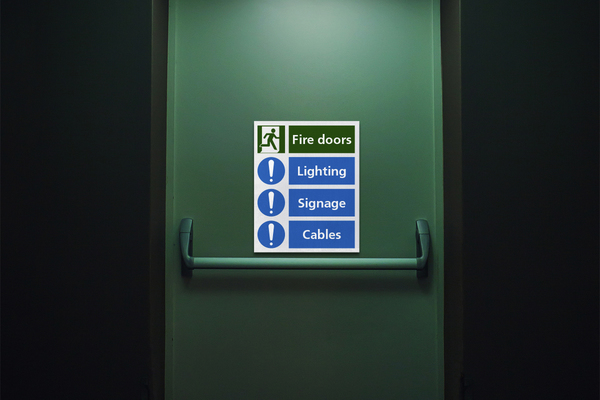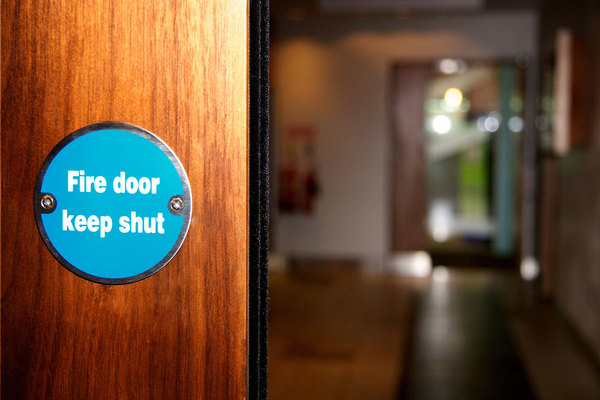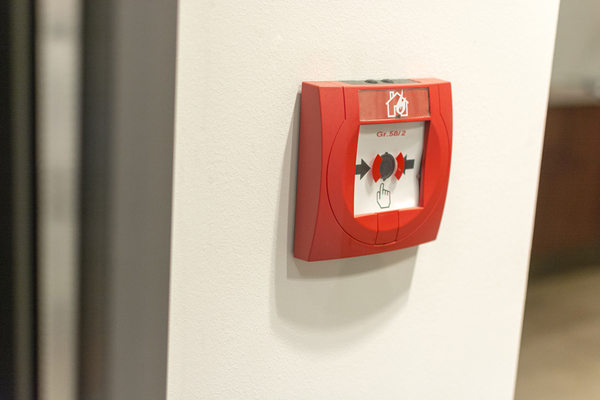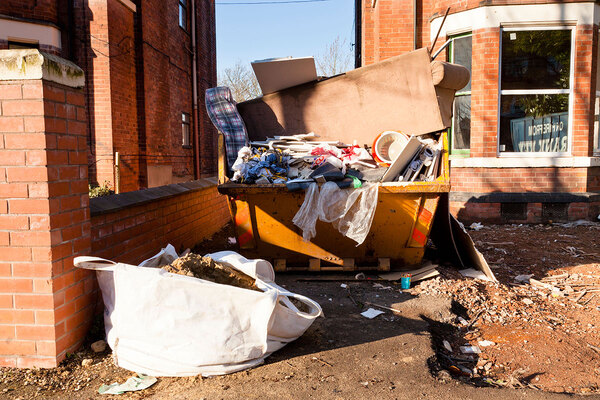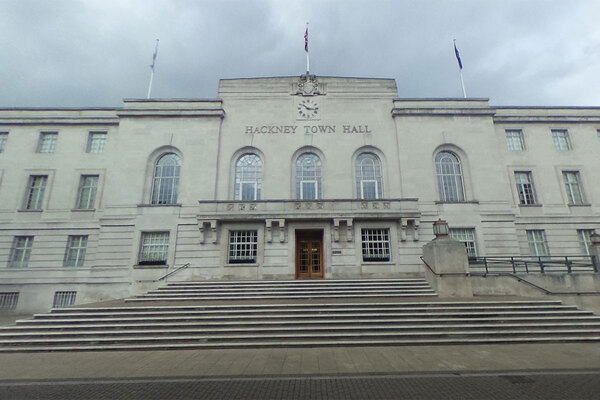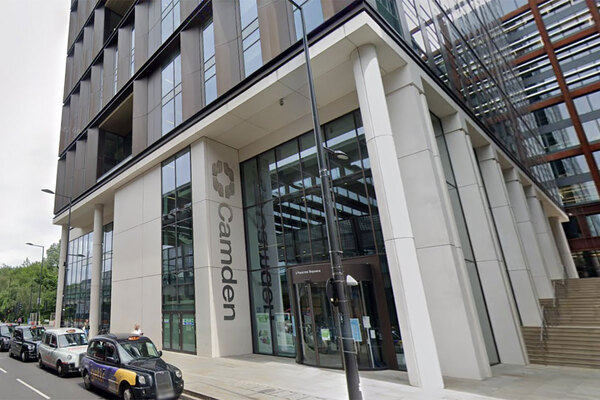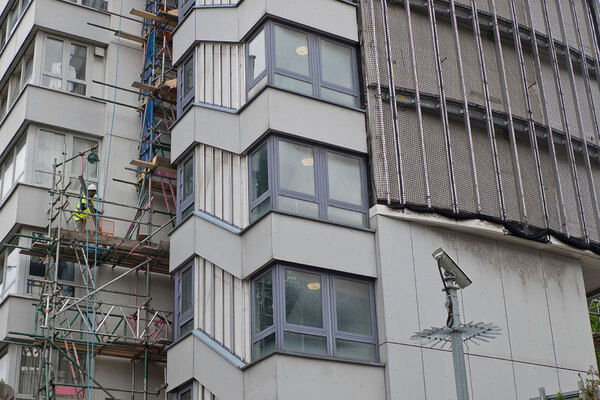You are viewing 1 of your 1 free articles
Spot the difference: the block of flats with two fire risk assessments
Two fire risk assessments on the same building shine a light on worrying inconsistencies with the current system. Martin Hilditch reports. Illustration by Stephen Collins
The way we assess fire risk in the UK has come under intense scrutiny since the Grenfell Tower fire in June last year.
More specifically, concerns have been raised about the fire risk assessments (FRAs) carried out by landlords, or by contractors on their behalf.
Pretty much anyone can set themselves up as a risk assessor – there’s no legal requirement for building owners to use accredited assessors – and there are significant question marks over the quality of some of those operating in the industry. Equally, with hundreds of assessors of all shapes and sizes to choose from, there is a large variety of approaches to carrying out FRAs.
At the end of last year this prompted the former chief executive of the English social housing regulator, Peter Marsh, to speak out. In an exclusive interview with Inside Housing he warned that “there are clear differences between FRAs produced by different firms and for different landlords”. He called for FRAs to be published – many landlords have chosen not to do this – so “one can see those differences and ask questions about them and help raise the quality”.
While people have been able to talk about these differences theoretically it has been tricky to make direct comparisons. Until now.
Inside Housing has been talking to one landlord which, due to a particular set of circumstances, ended up with two risk assessments, carried out less than two months apart, for a single block of housing. The differences between them cut right to the heart of the debate about how fire risk is assessed in the UK and why landlords might want to think more closely about how they judge the effectiveness of their FRAs. Boiled down to its essence, this is the story of a broken system.
In telling that story, the obvious first question is how did one building come to have two risk assessments?
The answer is basically because the block is owned by one social landlord but the homes within it are managed by another. We are choosing not to name the landlords involved because one of them got in touch with Inside Housing following a conversation about fire safety and promised to supply both risk assessments on the basis that they remained anonymous.
"The differences between them cut right to the heart of the debate about how fire risk is assessed in the UK"
We agreed to this in order to make a comparison that sheds important light on the wider system, and because the assessments date back to the start of last year. The actions identified in them have since been addressed and a new FRA carried out.
Suffice to say that the tale of two risk assessments begins in a three-storey brick building with 16 flats in a small town in England. The point, perhaps, is that this could be anywhere.
At the start of 2017, the housing association that manages the homes in the block employed a firm of consultants to conduct a risk assessment. The assessment was based on a site visit carried out by one of its employees, in the presence of a support officer from the housing association.
Less than two months later, the social landlord that owns the block did exactly the same thing – except it employed a different firm. Both landlords operated with no knowledge of what the other had done or planned to do (which no doubt became an action point for learning on both of their agendas when this was later picked up on).
Whatever the rights and wrongs of how this happened, it turned out to be an important cock-up. Because when the landlords realised shortly afterwards what had occurred, it enabled them to compare notes. What they found shook them up.
Broadly, both the risk assessments came to the same conclusion – that the blocks were of a medium risk and that some improvements needed to be made to lower the level. This might all sound fine, but the devil, as tradition dictates, was hiding in the detail.
“The expert advice is completely different,” is the way that the chief executive of the housing association that manages the homes puts it.
Certainly, when you compare the two assessments there are a number of quite stark differences between them.
“The expert advice [in the assessments] is completely different.”
Let’s start with the vital issue of compartmentation – the way buildings should be divided into separate compartments to stop fire spreading between different rooms, flats and floors. The first of the two risk assessments to be carried out suggested that “fire walls, floors and ceilings between the premises being assessed and neighbouring premises… appears adequate to prevent early fire spread”.
The second FRA, however, sounds much less sure. “A full compartmentation survey should be completed to ensure protection of the escape routes,” it states.
How about fire doors? Again, the first survey gives a relatively upbeat assessment. “All fire doors are provided with cold smoke seals and intumescent strips, or 25mm door stops which are glued and screwed into the door frame,” it states. “All fire check doors are fitted with self-closure devices where necessary, close in a reasonable time unaided, close/latch fully into the frame; do not have gaps in excess of 4mm around/between them.”
Click here to read our in-depth investigation into building regulations
It adds: “The provision and location of fire doors is adequate. Fire doors leading onto escape routes appear to be suitable in terms of stability, integrity and insulation. There are no excessive security measures such as grilles, gates and shutters that might delay escape by residents.”
The social landlord that owns the block got a very different opinion from its risk assessor.
The report it received states that: “Fire doors are not to current standards.” It adds that: “A full survey of all fire doors should be undertaken and intumescent strips and cold seals should be fitted to bring them up to current standards.” It also says that some of the doors in the building only have two hinges. “To comply with the current guidance a third hinge should be fitted.”
There are also differences when it comes to the fire alarm system (see box).
Then there are areas which one assessor flags up which either aren’t mentioned or aren’t given specific action points by the other.
Fire alarm systems
One might think there would be little room for difference with the fire alarm system. Well, think again.
The first assessor states that: “A suitable electrically powered fire alarm system is installed and appears to comply with BS (British Standard) 5839: Part 1.” However, it does warn that the system is “not regularly maintained by a competent engineer to the relevant standard”.
The second risk assessor, however, seems much less confident about the standard of the overall system.
“Confirmation should be sought from a competent person to establish the exact type of fire alarm system is installed in the premises,” the report states. The assessor then adds: “Once it has been established what type of system is in place it should be recorded and the information kept in the office.”
For example, the first assessor is concerned that the fire extinguisher and hose reels are not maintained annually by a competent engineer and that test labels aren’t correctly completed or affixed.
Perhaps this had been addressed a month-and-a-bit later, because the second assessor makes no mention of this. The first assessor also suggests that “smoke control systems are not maintained at an appropriate level by a competent engineer”. Again, this could have been addressed by the time of the second visit – but it isn’t raised.
The second assessor has their own unique thoughts too, suggesting that a fire drill should be carried out every six months and the results recorded in a log book. Staff working on the premises should also be given training every six months, he states. He says it is not clear how often dryers in a laundry room have their filters cleaned – a potential fire risk if this doesn’t happen often – and says it should be done on a regular basis.
Even the tone of the reports is different, with the first stating that, in the opinion of the consultant: “This is a well-managed building in terms of fire safety and risk management and at the time of the survey no person was identified as being at special risk and the building by its design, construction and use did not present any significant risk.”
The second report is much more matter of fact, listing the building type and overall risk without attempting to present an overarching narrative.
“You have to come to a conclusion and live with that conclusion.”
The chief executive of the organisation that manages the building says that they think the reports “do absolutely prove the point that people have been trying to make” about the variations between risk assessments and the need to spread learning. “It is unusual that you have got that direct comparison,” they state, explaining their decision to show their FRA (and that of another landlord) to Inside Housing.
When both organisations realised there had been two assessments carried out they decided to address the action points raised in both of them (and have now streamlined the system with a new supplier. A separate firm carries out an audit of those assessments). Nonetheless, it is clearly obvious that if a single risk assessment had been carried out many issues raised would potentially not have been considered at all – whichever FRA is removed from the equation.
Clearly there are steps that everyone in the sector should be taking. Apart from auditing risk assessments that have been carried out in order to form a judgement about whether they are thorough enough, senior staff for social landlords need to understand the buildings they are responsible for.
"The differences between the FRAs in this individual case raise serious questions for everyone in the sector"
“You have to understand the nature of the building and the nature of the customer, and you have to listen to the experts around the table,” the chief executive responsible for residents in the block in question states. “You have to navigate your way through [as a leader] and come to a conclusion and then you have to live with that conclusion.”
As mentioned, however, the differences between the FRAs in this individual case raise serious questions for everyone in the sector about how to make sure the advice they are getting is as thorough as it might be. If landlords aren’t sharing that information publicly, how can we begin to get a wider sense of what approaches to FRAs work best – or scrutinise any gaps? It is in order to further this debate that one of the organisations in question chose to let us see the FRAs.
At its most basic, as the chief executive states, it leaves one central question about how housing providers can make sure the flow of information from risk assessments is of the right quality to enable them to make informed decisions.
“In a sense, who are you going to trust?” they add.

